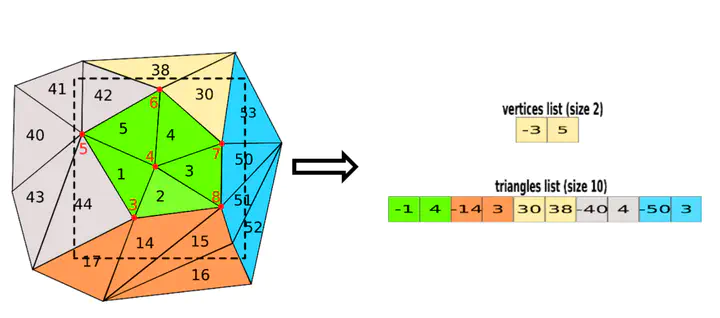Terrain trees: a framework for representing, analyzing and visualizing triangulated terrains

Abstract
We propose a family of spatial data structures for the representation and processing of Triangulated Irregular Networks (TINs). We call such data structures Terrain trees. A Terrain tree combines a minimal encoding of the connectivity of the TIN with a hierarchical spatial index. Connectivity relations are extracted locally at run-time, within each leaf block of the hierarchy, based on specific application needs. Spatial queries are performed by exploring the hierarchical data structure. We present a new framework for terrain analysis based on Terrain trees. The framework, implemented in the Terrain trees library (TTL), contains algorithms for morphological features extraction, such as roughness and curvature, and for topology-based analysis of terrains. Moreover, it includes a technique for multivariate visualization, which enables the analysis of multiple scalar fields defined on the same terrain. To prove the effectiveness and scalability of such framework, we have compared the different Terrain trees against each other and also against the most compact state-of-the-art data structure for TINs. Comparisons are performed on storage and generation costs and on the efficiency in performing terrain analysis operations.
Extended version of Riccardo Fellegara, Federico Iuricich, Leila De Floriani (2017). Efficient Representation and Analysis of Triangulated Terrains. Proceedings of the 25th ACM SIGSPATIAL International Conference on Advances in Geographic Information Systems.